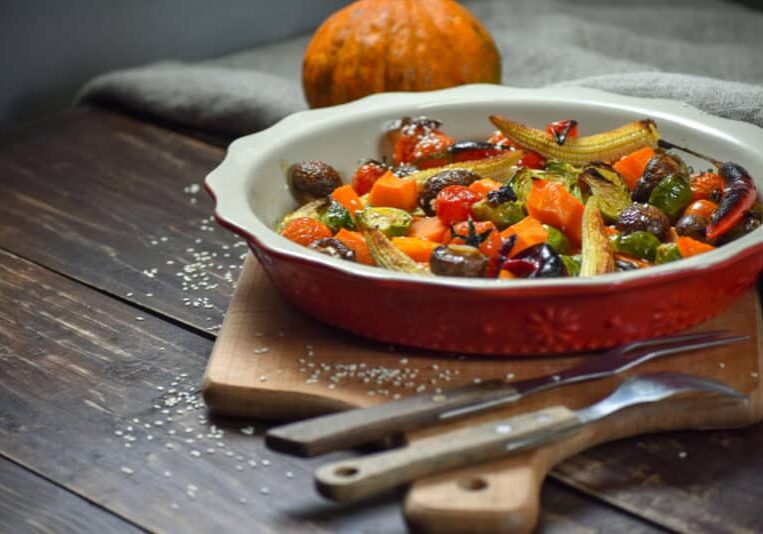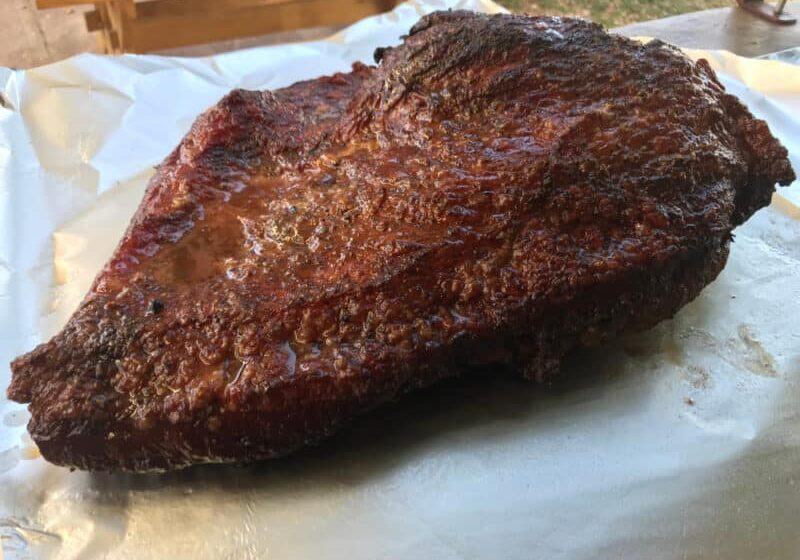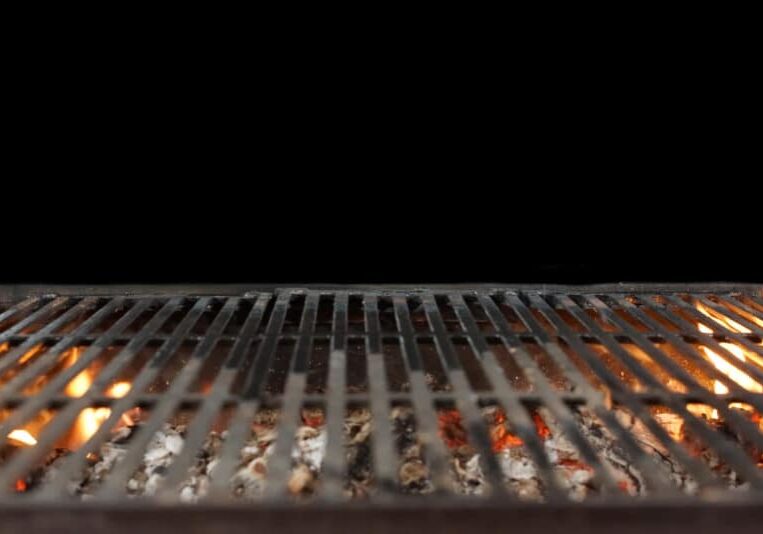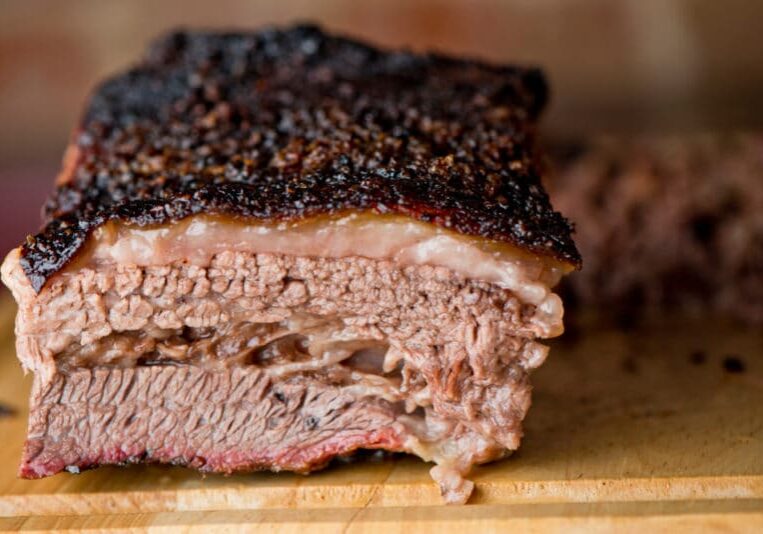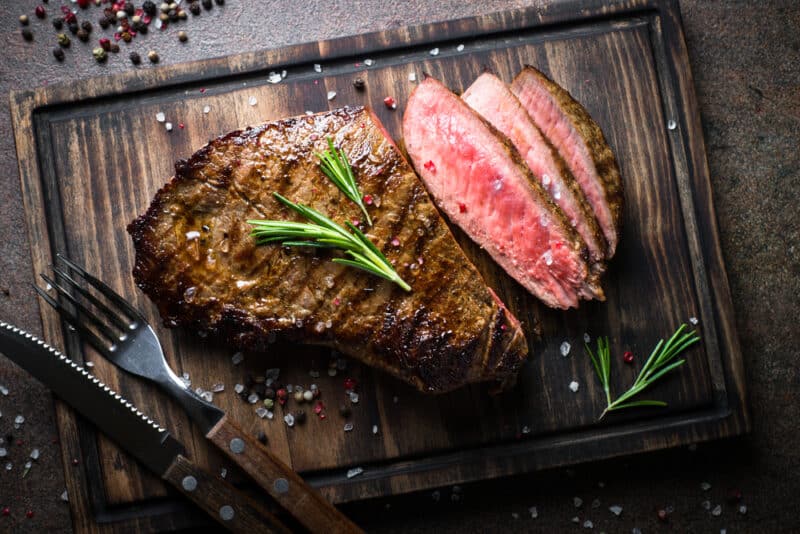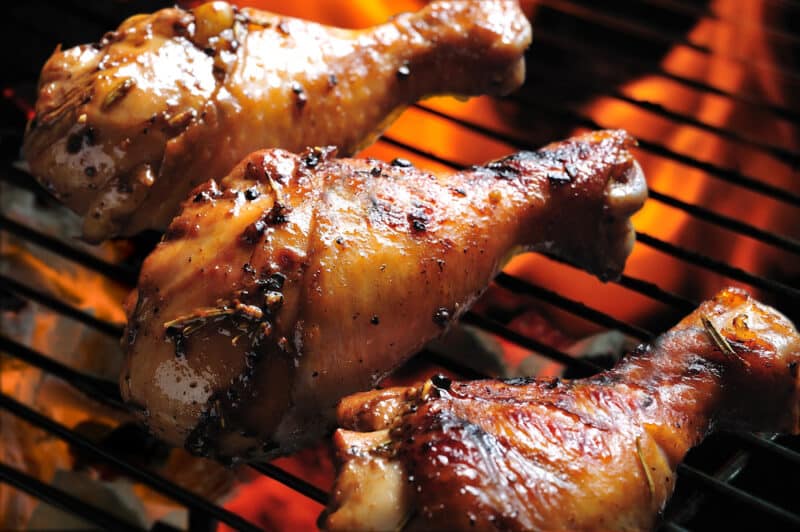How to Grill Fish on a Charcoal Grill: Tips for Perfect Seafood
TheGrillingMaster.com is reader-supported. If you buy something using the links on our site, we might earn an affiliate commission at no added cost to you. This helps us pay our staff to keep making awesome content for you!

Grilling fish over a bed of glowing coals can often lead to frustration; that delicate skin just loves to cling to the grill grates, or you’re left with a fillet that’s more char than charm.
Believe me, I’ve wrestled with my fair share of seafood on sultry summer evenings. But through persistence and a lot of trial and error, I’ve honed techniques that elevate grilling from mere cookout chore to culinary craft.
In this article, I’m eager to pass along those practical steps and insider tricks so that you too can nail the perfect grilled fish every time—no more sticking, no more dry disappointments.
Gear up for an ocean’s worth of flavor right in your backyard!
Key Takeaways
- Preheat the grill to medium – high and oil it to prevent the fish from sticking, which also helps achieve a good sear.
- Be sure to choose fish with firm flesh for grilling, such as salmon, trout, swordfish, or tuna.
- Consider indirect grilling or using foil packets for more delicate fish types to cook them evenly without burning.
- Use a plank soaked in water for an hour before placing on the grill to give your fish a smoky flavor.
- Keep experimenting with different seasonings and marinades like olive oil and herbs or soy sauce mixtures for varied flavors.
Types of Fish for Grilling
When it comes to grilling fish, choosing the right type of fish is crucial for a successful and delicious outcome. From salmon to tuna to swordfish, selecting fresh and firm-fleshed varieties will ensure that your grilled seafood turns out perfectly every time.
Prepping the fish for grilling is also an essential step in achieving great results on the charcoal grill.
Choosing fresh fish
As I stroll through the fish market, my eyes and nose guide me to choose fresh seafood for grilling. Fresh fish should have clear, bright eyes and firm flesh that springs back when gently pressed.
A clean ocean-like scent is a good sign; avoid anything with a strong fishy odor as it suggests the fish may be past its prime. Look for glistening skin; dullness often means the fish isn’t freshly caught.
It’s essential to check that the gills are vibrant red or pink—a sign of freshness—and make sure there are no discolorations on the skin or fins. Whole fish grilling requires particular attention to these details since you’ll cook it in its entirety.
Once I’ve picked my perfect catch, I’m ready for a delicious barbecue experience where grilled seafood dishes promise rich flavors and tender textures every time!
Best fish for grilling
When choosing fish for grilling, look for varieties like salmon, trout, swordfish, and tuna.
- These types of fish have firm flesh that holds up well on the grill and doesn’t flake apart easily.
- Salmon is rich in flavor and works exceptionally well with various marinades and seasonings.
- Trout has a delicate texture and mild flavor, making it suitable for grilling whole or filleted.
- Swordfish is meaty and can be cut into steaks, ideal for direct grilling over high heat.
- Tuna is dense and robust, perfect for searing quickly over high heat to retain its juiciness.
- Other options include mackerel, snapper, halibut, and mahi – mahi, each offering unique flavors and textures for grilling.
Prepping the fish for grilling
When preparing fish for grilling, start with fresh fish to ensure the best flavor. Remove scales by scraping the side of the fish from tail to head. Gut the fish and remove gills. Rinse the fish under cold water, inside and out, removing any remaining blood or debris. Pat dry using paper towels. Make shallow cuts on both sides of the fish to help it cook more evenly.
Techniques for Grilling Fish
When it comes to grilling fish on a charcoal grill, there are a few techniques you can use to achieve perfectly cooked seafood. From direct grilling for quick cooking to indirect grilling for more delicate fish, these methods will ensure your fish is grilled to perfection.
Direct grilling
When grilling fish using the direct method, place the fish directly over the heat source.
- Preheat the grill to medium – high heat to ensure a good sear on the fish without overcooking it.
- Lightly oil the grill grates or brush the fish with oil to prevent sticking and promote beautiful grill marks.
- Place the seasoned fish fillets or whole fish directly on the preheated grill grates.
- Grill for 4 – 5 minutes on each side, depending on the thickness of the fish, until it flakes easily with a fork.
- Use a spatula or tongs to carefully flip the fish, ensuring that it stays intact and doesn’t stick to the grates.
- Serve immediately with fresh lemon wedges and your favorite sides for a delicious grilled seafood meal.
Indirect grilling
Indirect grilling is a great technique for cooking fish on a charcoal grill. It helps to cook the fish evenly without direct heat and reduces the risk of overcooking or burning.
- Create a two – zone fire by placing the charcoal on one side of the grill, leaving the other side empty. This setup allows you to sear the fish over direct heat and then finish cooking it with indirect heat.
- Place a drip pan filled with water or flavored liquids such as wine, broth, or herbs on the empty side of the grill. The liquid will help maintain moisture in the cooking environment and prevent flare-ups.
- Adjust the bottom vents and lid dampers to control airflow and maintain a consistent temperature inside the grill for even cooking.
- Close the lid while cooking to create an oven – like environment, which helps infuse smoky flavors into the fish while it cooks through indirectly.
- Check and rotate the fish occasionally to ensure that it cooks evenly from all sides, taking advantage of indirect heat’s gentle cooking process.
- Use a meat thermometer to check for doneness, aiming for an internal temperature of 145°F (63°C) for most types of fish.
- Enjoy juicy and flavorful grilled fish using this indirect grilling method, perfect for achieving restaurant-quality seafood at home.
Grilling in foil
Grilling fish in foil not only helps to prevent the fish from sticking to the grill but also locks in moisture and flavor. Here are some tips for grilling fish in foil:
- Prepare the foil by spraying it with non – stick cooking spray or brushing it with oil to prevent the fish from sticking.
- Season the fish with your choice of seasoning, herbs, and lemon slices before wrapping it in the foil.
- Ensure that the foil is tightly sealed around the fish to create a pouch, leaving some room for steam circulation inside.
- Place the foil – wrapped fish on the preheated grill over direct heat and cook according to the recommended time for your specific type of fish.
- To check for doneness, carefully open one edge of the foil pouch and test if the flesh flakes easily with a fork.
- Once done, carefully remove the foil pouch from the grill, open it up, and serve your perfectly grilled fish straight from the foil for a delightful presentation and an easy cleanup.
Tips for Perfectly Grilled Fish
Properly preheating the grill is crucial for a perfect sear on your fish, and using oil to prevent sticking will ensure that your seafood comes off the grill in one piece. To learn more about these tips and other advanced grilling techniques, keep reading!
Properly preheating the grill
To preheat the grill, ignite the charcoal and let it burn until covered with a thin layer of gray ash. This indicates that the coals are at their hottest and ideal for grilling fish.
Open all vents to allow airflow, which helps in achieving high heat levels on the grill. Once ready, distribute the hot coals evenly across one side of the grill for direct heat cooking or around the perimeter for indirect heat cooking.
For gas grills, set all burners to high and close the lid to allow maximum heat buildup inside. After 15 minutes, reduce the burners to medium-high before placing your fish on the grate.
Using oil to prevent sticking
I coat the grill grates with a high-heat cooking oil using a brush or paper towel. This prevents the fish from sticking to the grill while also helping to achieve those beautiful grill marks.
The oil also adds a layer of flavor and helps create that delicious crust on the outside of the fish.
To avoid flare-ups, I use an oil with a high smoke point such as vegetable, canola, or grapeseed oil. I ensure that the grates are well-oiled before placing any fish on them for perfectly grilled seafood every time.
Knowing when the fish is done
To determine if the fish is done, I use a fork to gently twist and separate the flakes in the thickest part of the fillet. If the flesh easily separates and appears opaque with just a hint of translucency in the center, then it’s perfectly cooked.
Another way to check doneness is by using an instant-read thermometer; fish should reach an internal temperature of 145°F. It’s important not to overcook as this can make the fish dry and less flavorful.
After removing from heat, I let it rest for a few minutes before serving. This allows any residual cooking to finish while maintaining juiciness. With these techniques, you’ll be able to confidently grill your seafood without worry about under or overcooking!
Advanced Grilling Techniques
For those looking to take their grilled fish game to the next level, there are a few advanced techniques to consider. Using a plank can infuse your fish with smoky flavor, while a grill basket or foil can help prevent delicate fillets from falling apart on the grill.
These methods add an extra layer of flavor and ease to your grilling experience.
Using a plank
To infuse my grilled fish with a smoky flavor, I soak a cedar plank in water for at least 1 hour before grilling. Then, I place the plank directly on the preheated grill and let it char slightly on one side.
After flipping it over, I carefully arrange seasoned fish fillets on the charred side of the plank and close the lid. The fish cooks slowly from the indirect heat and absorbs the subtle woodsy aroma from the smoldering plank.
Grilling fish on a soaked plank not only imparts a unique flavor but also creates an impressive presentation when serving. It’s a simple yet effective method to elevate your grilled seafood game and impress your guests with perfectly cooked, flavorful fish.
Using a grill basket
When grilling delicate fish fillets, using a grill basket can make the process much easier. The grill basket prevents the fish from sticking to the grate and breaking apart. It also allows for easy flipping without the risk of losing any pieces in the flames.
Simply place the fish in the grill basket, season it with your favorite flavors, and then cook it directly on the grill. This method ensures that your fish cooks evenly and gets those beautiful grill marks without falling apart.
Additionally, using a grill basket is great for cooking smaller seafood items like shrimp or scallops. It keeps them contained and makes it simple to turn them all at once for even cooking.
Using foil
I grill fish using foil to keep it moist and prevent sticking. I place the fish on a large piece of heavy-duty aluminum foil, drizzle with oil, season, and fold the edges of the foil to create a sealed packet.
This method locks in moisture and flavors while preventing the fish from falling apart on the grill.
Grilling fish in foil is convenient and produces juicy, flavorful results. It’s perfect for delicate or flaky fish varieties like tilapia or salmon. The foil also makes cleanup a breeze as there are no grill grates to scrub afterwards.
Final Tips and Tricks
I always leave the skin on when grilling fish to help keep the fish intact and add extra flavor. Using skewers for small pieces of fish is a great way to prevent them from falling through the grill grates.
Trying different seasonings and marinades can also elevate the flavor of your grilled fish.
Leave the skin on
Leaving the skin on the fish before grilling helps to protect the delicate flesh and keep it moist during cooking. The skin also adds flavor and holds the fish together, making it easier to handle on the grill.
Plus, once grilled, the skin becomes crispy and flavorful, adding a delicious texture to your perfectly cooked fish.
Leaving the skin on offers an easy way to enhance your grilled fish with minimal effort, while also providing added benefits such as preventing sticking to the grill grates and retaining moisture throughout cooking.
Use skewers for small pieces of fish
Skewers are perfect for small pieces of fish, as they keep the delicate fillets intact while grilling. To prevent the fish from sticking to the grill, make sure to oil the skewers and preheat them before adding the fish.
This method also makes it easier to flip the pieces without breaking them. Additionally, using skewers allows for even grilling on all sides, ensuring that each piece is perfectly cooked and infused with smoky flavor from the charcoal grill.
Grilled seafood
Cooking fish on charcoal grill
Try different seasonings and marinades
Experimenting with various seasonings and marinades can elevate the flavor of grilled fish. I often use a simple combination of olive oil, lemon juice, and fresh herbs such as dill or thyme to marinate my fish before grilling.
For a more pronounced flavor, a mixture of soy sauce, garlic, ginger, and honey can add depth and complexity to the seafood. Additionally, exploring different spice blends like Cajun seasoning or chili-lime can provide an exciting twist to your grilled fish.
When it comes to seasoning fish for the grill, I also enjoy using dry rubs made from paprika, cumin, and brown sugar for a smoky sweetness. This creates a beautiful crust on the outside of the fish while keeping it moist in the center.
The variety of flavors you can achieve by experimenting with different seasonings is truly endless!
Conclusion
In conclusion, grilling fish on a charcoal grill can be a delicious and rewarding experience. Experimenting with different types of fish and techniques is the key to mastering the art of grilled seafood.
Remember to keep an eye on your cooking time for perfect results every time. Try out various seasonings and marinades to elevate the flavors of your grilled fish. With practice and patience, you can become a pro at grilling fish on a charcoal grill!
FAQs
1. What’s the best method to grill fish without it sticking to the charcoal grill?
To keep your fish from sticking, oil both the fish and grill grates well before you start grilling.
2. Can you share some tips for searing fish on a charcoal grill?
Sure! Pat your fish dry, apply a light coating of oil, and place it on a hot grill; this will help create a perfect sear.
3. How can I season my grilled fish for maximum flavor?
Season your grilled seafood with herbs, spices, or marinades that complement its natural flavors before placing it onto the barbecue.
4. What are some effective techniques for grilling seafood over charcoal?
Use direct high heat for quick-cooking items like shrimp and indirect heat for thicker cuts; monitor closely to achieve grilled perfection!
5. Are there specific barbecue techniques recommended when using a charcoal grill for seafood?
Yes! Keep an eye on temperature control and timing while giving your seafood those irresistible char-grilled marks with precise flipping techniques.
Learn More About Grilling
If you want to learn more about grilling, check out these other helpful resources!

Kevin Turner
Hi there, I'm Kevin Turner, Founder and CEO of thegrillingmaster.com. I started this website to share my passion and knowledge with you. You can leverage my years of experience as a pit master and professional to grill great food!
About The Grilling Master
Hi there, I'm Kevin Turner, Founder and CEO of thegrillingmaster.com.
My passion has always been grilling, smoking and BBQ delicious meats that satisfy my inner carnivore!
I started this website to share my passion and knowledge with you, the hungry reader who wants to prepare the perfect meal.
You can leverage my years of experience as a pit master and professional.
Send me a message and let's connect on Twitter here.



